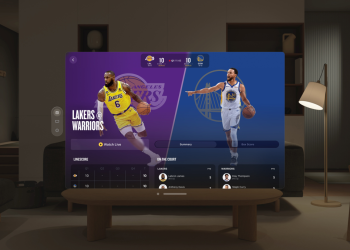Google’s third foldable features many improvements over the second, from a world-first IP68 rating to Qi2 magnetic charging, brighter screens and a bigger battery. But one area where it hasn’t been improved is size and shape. In fact, the Pixel 10 Pro Fold is a gram heavier and a fraction of a millimeter thicker than last year’s 9 Pro Fold.
In fairness, the Pixel 9 Pro Fold stood out for being thin and light by foldable standards. But the industry is changing quickly, leaving its successor with one of the thickest new foldable phones on the market.
Over the past year, Oppo, Honor and, most importantly, Samsung have all traded blows in pursuit of the “world’s thinnest foldable” title, while Google has never entered the ring. But I’ve used all of these ultra-thin foldables and reviewed a few, and after a week with the Pixel 10 Pro Fold, I’m happy to say: It may be the thickest, but it’s still pretty thin.
Google’s new foldable measures 5.2mm thick when open and 10.8mm when closed. Unfolded, it’s enough to look undeniably thin – it’s thinner than all but the thinnest tablets – but the question is how the phone feels when closed.
One of the criticisms that foldable devices have faced since the beginning is that they look a bit like two phones stuck together. The 10 Pro Fold certainly isn’t that bad, but it’s thicker than almost every slab phone on the market. This is where rivals like the Samsung Galaxy Z Fold 7 make the difference felt: At 8.9mm thick, this phone is just a hair thicker than the 8.8mm iPhone 17 Pro Max and less than a millimeter thicker than Google and Samsung’s flagship phones. This is an advantage that the Pixel 10 Pro Fold simply lacks.



Over the past week, I’ve been using the new foldable Pixel as is and in Google’s official Pixelsnap case – a thin, snap-on plastic protector that adds just a little more depth to the device. Regardless, I can’t say that its size really bothered me. Held side by side with a phone like the Honor Magic V5, currently the thinnest foldable on the market, the difference is obvious. But in everyday life, with the phone in my jeans pocket or in one hand on the bus, I never thought it felt too thick.
The only thing that gives me pause is the weight. At 258g, the Pixel is almost 50g heavier than the Z Fold 7, and that It annoys me a little. It’s just enough to make the phone uncomfortable after a train journey spent holding it in one hand, or for my arms to drop half an inch when hoisting it above my head in bed.
Of course, the trade-off between size and weight is the same on both counts: battery size. The Pixel’s 5,015 mAh battery comfortably outperforms the Z Fold 7’s 4,400 mAh and saved me from battery anxiety entirely – I had 40% left to go to bed with most nights, leaving plenty of wiggle room for days of heavy use and inevitable degradation. It’s still not a patch on the battery capacity of Oppo and Honor’s thinnest phones, but they benefit from energy-dense silicon-carbon batteries that the US market has been much slower to adopt.
I’ll be the first to admit that before I used the phone, I was wrong. When reviewing the Honor Magic V5 two months ago, I criticized the 10 Pro Fold’s design for feeling “dated” before it even launched, but I’ve since changed my mind. Phones like those from Honor, Oppo, and Samsung certainly seem to be the future of foldable devices, but the slightly thicker Pixel looks just fine for now. That’s partly because I stand by my assertion that thinner phones are going to give us diminishing returns — we’ve reached the end point, at least until we’re all ready to ditch USB-C and go portless. Google may not have gotten there yet, but it’s not far behind.








